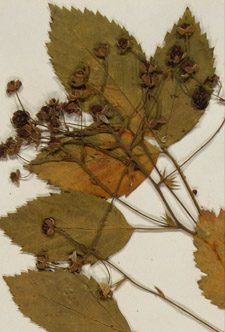
THE EXHIBITIONIntroduction Biography Horticulture NY State College of Agriculture Cornell University Nature Study Education of Women Commission on Country Life Hortorium Photography Writings Travel |

|
BOTANYAs a young man, Bailey read Asa Gray’s Field, Forest, and Garden Botany, and avidly studied taxonomic keys and descriptions used in plant classification. His first botanical paper (unsigned) was a review of a “Catalogue of Michigan Plants,” published in the Michigan Agricultural College’s publication, College Speculum, in 1881. It was in the botanical study of cultivated plants that Bailey made his most significant and lasting contributions. He argued that such plants were especially worthy of study and record. Genetically complex and inadequately recorded as well as economically important, they presented many problems of classification and nomenclature. Throughout his life, Bailey sought to bring botanical science within the grasp of the ordinary person. After his retirement, Bailey continued his taxonomic work. From 1923 to 1949 he published over a hundred scientific papers, mostly extended studies concerning the revision of various genera. He became a specialist in the systematics of the palms and the blackberries. He also published revisions of Vitis (grapes), Brassica (cabbages and kales), Cucurbita (pumpkins and squashes), Hosta (plantain-lilies), and horticultural monographs of lesser botanical import on Dianthus, Delphinium, Campanula, and the gourds.
|
||
 |
This exhibition is made possible through a generous gift in memory of Lelah A. Cole.
© 2004 Division of Rare & Manuscript Collections. If you have a question or comment, please contact us. | Web Accessibility Assistance |